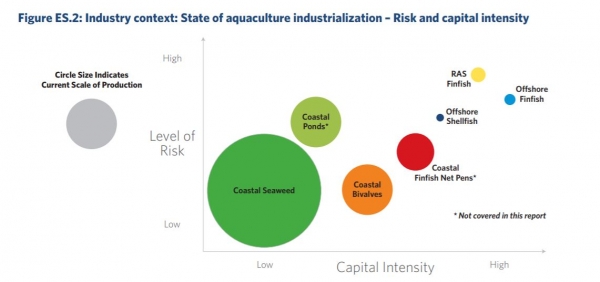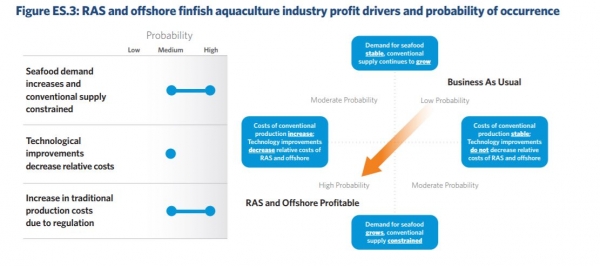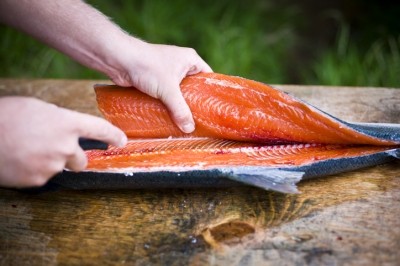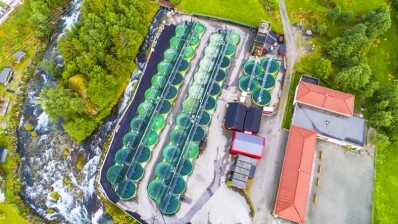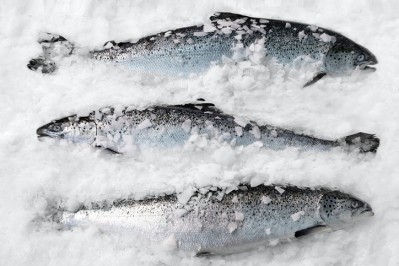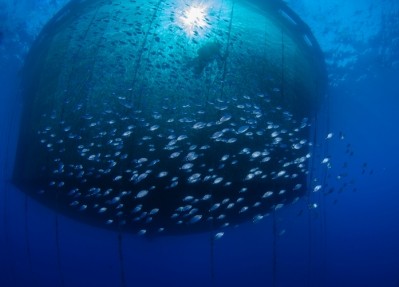Investors urged to back equally lucrative but more sustainable forms of aquaculture
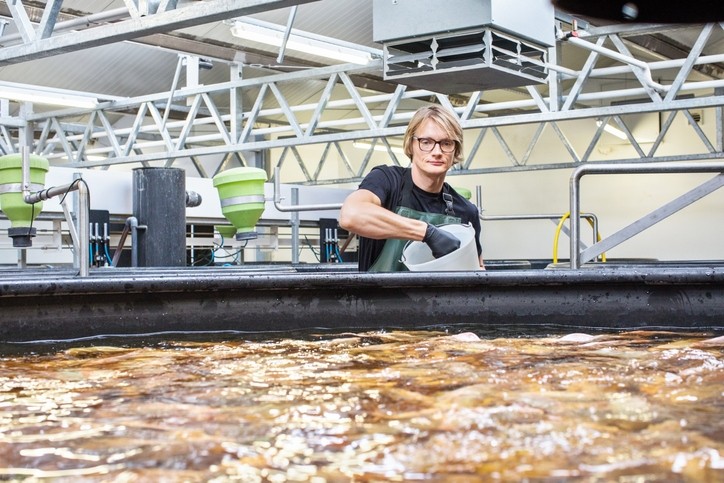
The two organizations said the report, Towards a Blue Revolution: Catalyzing Private Investment in Sustainable Aquaculture Production Systems, represents the first attempt to assess the aquaculture space through a financial and environmental lens.
Already a US$243.5bn sector, the authors said the rapid growth of aquaculture holds great promise to meet growing global demand for more sustainable forms of protein while protecting marine ecosystems.
“We believe that the industry can help to meet the nutritional needs of a growing global population, while also generating environmental and social benefits, and providing attractive investment opportunities with compelling financial returns.”
However, they noted that conventional aquaculture production in some locations has outpaced regulation and has created environmental challenges in the process.
Their guide focuses primarily on the production stage of the supply chain. It delves deeply into production systems they believe have the potential for combined financial returns and improved environmental sustainability including on-land finfish recirculating aquaculture systems (RAS), and offshore finfish aquaculture systems.
Today the industry is at an inflection point, they stressed. If business continues as usual, the global reliance on seafood could jeopardize marine ecosystems and the livelihoods they support in myriad ways, especially in coastal communities and the developing world, said the authors. “But if we can shift production toward the most sustainable forms of aquaculture production, we can not only foster healthier marine ecosystems, but also a stronger global food system. The key will be how we direct future investments in the industry.”
Product environmental footprinting
Danish fish feed manufacturer, BioMar, said the timing and significance of this report is monumental.
“The authors make compelling arguments for investing in sustainable aquaculture using both traditional finance metrics and new impact investing principals. With that said, BioMar would encourage the investment community to view environmental impacts using the life cycle framework,” Erik Olav Gracey, BioMar group sustainability specialist, told FeedNavigator.
Life Cycle Thinking (LCT), he continued, is about going beyond the traditional focus on production site and manufacturing processes to include environmental, social and economic impacts of a product over its entire life cycle, from raw material extraction to product disposal.
While the authors do include some life cycle references, the BioMar sustainability expert said a core assumption in the report is illustrated in this extract: “While improved farming practices and innovations in ancillary technologies, services, and resource-intensive inputs like feed may be able to enhance the sustainability of a range of production models, the production systems themselves remain the most important driver of environmental impacts."
Gracey said such an assumption holds true when the scope is limited to the direct impacts of aquaculture production systems, summarized in table 4.11 of the report. “However, with transport to market being another key parameter, the indirect supply chain impacts of feed usually dominate the product environmental footprints of farmed seafood in most categories, including freshwater use, land use, and carbon emissions,” he countered.
In Atlantic salmon aquaculture, a large body of peer-reviewed studies show that compound aqua feed is often responsible for more than 80% of the life cycle environmental impacts of producing seafood, said Gracey.
BioMar, therefore, suggests that product environmental footprinting should be added into future impact assessment frameworks, along with the inclusion of clearly defined sustainable feed parameters in aquaculture impact theses where feed is a major production input, he said.
“We consider these additions as a prerequisite to accurately assessing impacts and risk profiles for investments in aquaculture,” commented Gracey.
With this constructive feedback in mind, he said that BioMar agrees with the overall conclusion of the report, namely that, “….underpinned by science and with appropriate governance, aquaculture can provide sustainable seafood to help meet the nutritional needs of a growing global population, while also creating incomes in rural communities, benefiting wider ecosystems and providing investment opportunities with compelling financial returns.”
Report recommendations
RAS systems
Land based, recirculating aquaculture systems (RAS) offer benefits, such as decoupling fish production from the marine environment, said the authors of Towards a Blue Revolution...
RAS systems may offer an alternative to traditional, coastal net pen (CNP) finfish production with better environmental performance, higher production capacities per unit area, reduced mortality, and greater control over production outcomes, they said.
Though they note that RAS systems are not without environmental trade-offs, that they may result in increased energy usage, water usage, and land usage compared to CNPs.
The authors reported that large integrated salmon producers have invested heavily in developing RAS technology to raise juvenile fish to larger sizes before transferring them to net pens in nearshore environments for outgrowth. However, full life cycle, egg-to-harvest large-scale RAS production has remained elusive.
“A legacy of failed projects, high capital requirements, a lack of experienced operators, and unproven economics at scale has left many investors and industry players skeptical until recently.”
A new class of entrepreneurs and investors, though, have been attracted to the RAS segment by a range of favorable trends, including regulatory challenges limiting CNP supply growth, high market prices for key species like salmon, rising costs of animal health and disease prevention in CNP systems, and improvements in RAS operational knowledge and system design, they noted.
“Our view is that the sector will remain risky in the short-term, but not prohibitively so in all cases.”
This month, Atlantic Sapphire US, a subsidiary of Norwegian farmed salmon firm Atlantic Sapphire A/S, increased its expected annual harvest volumes to 220,000 metric tons by 2031, more than doubling its original predictions of 90,000 metric tons, according to an investor presentation, while in February Singapore-based, Pure Salmon, said it was continuing its push to establish a worldwide network of sustainable, land-based salmon farms, with the announcement of a new facility to be built in Virginia, in the US, as well as two new potential locations in Europe.
Evy Vikene, business development manager, salmonids, at Skretting, the fish feed manufacturing arm of Dutch group, Nutreco, told us last December: “The latest analysis I have seen is that, within 10 years, the grow-out land based production will be between 5 and 7% of global salmon production. However, there is huge uncertainty within those numbers.”
For her, it is not black or white, though, when it comes to making environmental based salmon production choices though; favoring RAS over open sea cages at sea is not always to way to go, she argues.
“The traditional salmon producing countries have fantastic resources, [in terms of] their coastlines. We should use the natural resources that we have, and I am fully convinced that with the ability of this industry to innovate, we will be able to grow [salmon production] in a sustainable way.
“For me, it doesn’t make sense to do full grow-out in the traditional markets. However, in the new markets, where there is not [an abundance] of natural resources like coastlines for fish production, it makes sense to do it on land. Recirculating systems are a very efficient way of using water to produce food, if you can get the technology to work and you have the water resources.
“It is not one or the other. There is more than enough room for both production methods – RAS or open cage - because the population is exploding.
“It boils down to using the resources we have in the most sustainable way.”
Offshore aquaculture
Offshore aquaculture can provide environmental performance advantages relative to traditional CNP aquaculture, including reduction of effluent and habitat impacts, and is likely to constitute an important subset of overall sector growth, according to the guide.
“Improvements in Feed Conversion Ratio (FCR), improved disease control, and reduced genetic interactions with certain species have in some cases been associated with offshore aquaculture, although additional studies are warranted.”
The authors said offshore production could provide significant commercial performance advantages, including the potential for larger scale, automation of processes, and new species cultivation; improved water quality, site availability, proximity to markets, and product quality; and reduced user conflicts and unit costs.
Most commercial-scale offshore projects have come online during the past five years, they reported.
Subsidiaries of large, vertically integrated, diversified incumbents from the salmon industry, predominantly in Norway, are getting involved along with small independent newcomers with business models dedicated to offshore technology and farming of niche species that do not compete with conventional producers, they said.
Concerns over limited nearshore sites, environmental sustainability, and food security have also led to new, state-sponsored development projects in China. Other countries exploring the potential for offshore aquaculture include the US, Japan, and Indonesia, although few active operations exist, noted the report.
“Due to relatively high capex requirements for offshore production, the complexity of deep-water operations, and regulatory uncertainty, early movers must be highly risk tolerant as they seek to prove commercial viability at scale,” concluded the report.
Nutreco is supporting a project based on a re-purposed ‘jack up’ drilling oil rig, surrounded by submersible fish cages. Norway’s Roxel Aqua is developing this concept for offshore salmon farming.
Viggo Halseth, chief innovation officer at Nutreco, told us in May 2018, that for many years there has been no global growth in the salmon industry; he cited as the reason the decrease in social acceptance for salmon farming due to sea lice, escapees and also due to manure.
“We want to be part of bringing new technology to the market that meet those three big sustainability challenges in salmon farming today,” he said.
The offshore concept means production is far away from any other farming, he explained. “You get a much higher current. You get a much more stable summer winter temperature. The number of sea lice in the water when you go 10km out from shore is very different. I am 100% sure it will be far less of an issue.”
